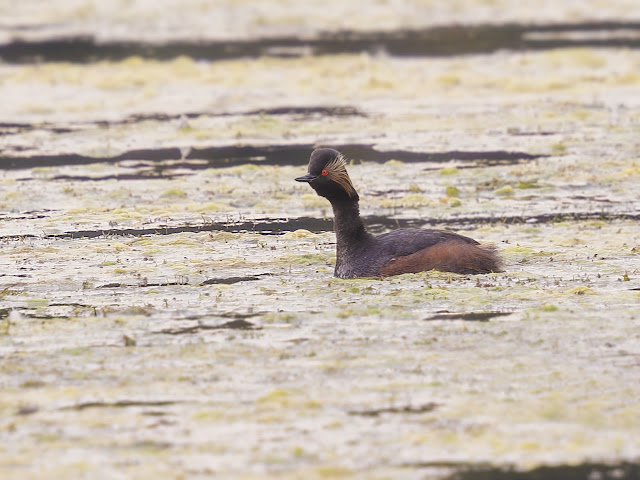There are days in birdwatching that whisk you right back to your earliest memories—and this encounter was one of them. On a calm summer evening at Deeping Lakes, I was thrilled to see this Black-necked Grebe in stunning summer plumage. This species used to be an annual visitor to the lakes back in the 2000s (and likely before), but it's scarcely been seen here over the last 15 years. Its appearance, following last autumn’s long-staying individual, was a nice surprise
Back in the day, during early spring, pairs of Black-necked Grebes would sometimes show at the lakes, hinting at possible breeding… only to slip away before they would nest. The only local breeding record I know of dates to spring/summer 1998, when a pair successfully raised young at Baston & Langtoft Pits. I was young then, but I vividly remember the excitement—Dad and I watched at close quarters, marvelling as this rare species felt like part of our local patch. For me, that spring helped cement my passion for birds.
Now, over two decades later, here was another resplendent Black-necked Grebe, feathers sleek, eyes bright, and full summer plumage gleaming on the water. It was a poignant reminder of how special these moments are. Although there’s no doubt a failed breeder from elsewhere, seeing one again at Deeping Lakes felt like a bridge across time—linking childhood memories to today’s joy in birdwatching.












